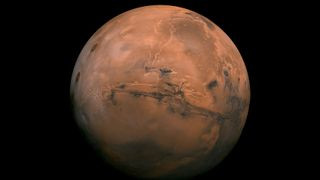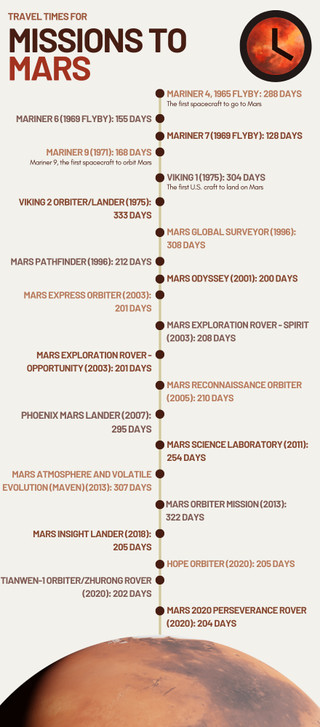 Image of Mars against the black backdrop of space. The planet is a rusty red color.
Image of Mars against the black backdrop of space. The planet is a rusty red color.
A journey to Mars, humanity’s next giant leap, is a complex undertaking. One of the most frequently asked questions is: “How long does it take to fly to Mars?” While a simple answer might suggest nine months for a one-way trip, the reality is far more nuanced. This article delves into the factors influencing Mars transit time, examining current technology, orbital mechanics, and historical mission data.
Factors Influencing Mars Travel Time
The distance between Earth and Mars is constantly in flux due to their elliptical orbits around the Sun. At their closest, they are approximately 33.9 million miles (54.6 million kilometers) apart, while at their furthest, the distance stretches to a staggering 250 million miles (401 million km). This fluctuating distance heavily influences travel time.
 graphic illustration of an astronaut walking on the surface of Mars.
graphic illustration of an astronaut walking on the surface of Mars.
Conceptualizing the vast distances involved in Mars travel. (Image credit: piranka via Getty Images)
Beyond distance, the chosen trajectory, spacecraft propulsion technology, and the mission’s objective (flyby, orbit, or landing) all contribute to the overall duration. Let’s explore these factors in detail.
The Speed of Light vs. Spacecraft Speed
Light, traveling at roughly 186,282 miles per second (299,792 km per second), could traverse the average Earth-Mars distance in about 12.5 minutes. However, achieving such speeds with current spacecraft technology remains a distant dream.
NASA’s Parker Solar Probe, the fastest spacecraft to date, reached a peak velocity of 430,000 mph (692,000 kph). Even at this speed, a straight-line journey to Mars (a simplification for illustrative purposes) would take between 3.3 days at the closest approach and 24.2 days at the furthest.
Orbital Mechanics and Mission Objectives
Real-world Mars missions don’t travel in straight lines. Instead, they follow curved trajectories dictated by orbital mechanics, aiming to intercept Mars at a specific point in its orbit. This intricate dance requires precise calculations and timing.
 Graphic illustration shows the Parker Solar Probe in front of the blazing sun.
Graphic illustration shows the Parker Solar Probe in front of the blazing sun.
The Parker Solar Probe, while incredibly fast, is designed for solar study, not Mars travel. (Image credit: NASA/Johns Hopkins APL/Steve Gribben)
Furthermore, missions intending to orbit or land on Mars require more complex maneuvers, including slowing down for orbital insertion or atmospheric entry. These maneuvers often necessitate longer travel times compared to simple flyby missions. As Michael Khan, Senior Mission Analyst at ESA, explains, missions requiring orbital insertion or landing introduce significant constraints on trajectory design, often leading to Hohmann-like transfers which typically last longer.
Historical Mission Durations
Past Mars missions provide concrete examples of travel times. Missions like Mariner 4 (flyby) took around 228 days, while more recent missions like Perseverance (rover landing) took roughly 203 days. These variations reflect the differences in mission objectives and launch windows.
 Timeline of missions to Mars.
Timeline of missions to Mars.
A timeline showcasing the duration of various Mars missions. (Image credit: Future)
Future Prospects and Conclusion
While current technology places Mars travel time in the realm of months, future advancements like photon propulsion hold the potential for drastically reducing this duration. However, for the foreseeable future, a journey to Mars remains a significant undertaking, demanding careful planning, advanced technology, and a deep understanding of orbital mechanics. The nine-month estimate serves as a general guideline, but the precise answer to “How Long To Fly To Mars?” depends on a complex interplay of factors.
